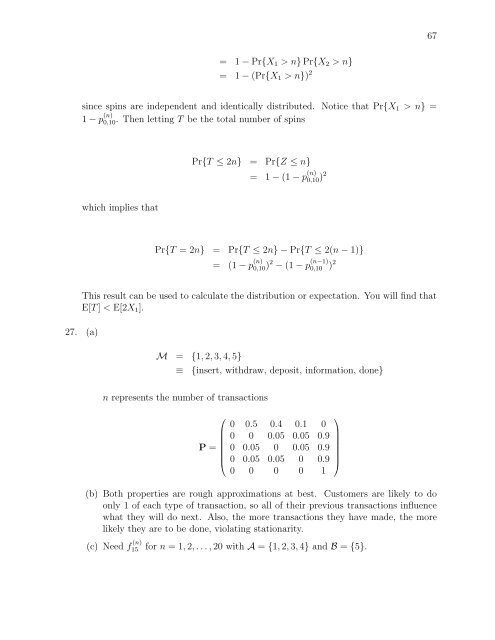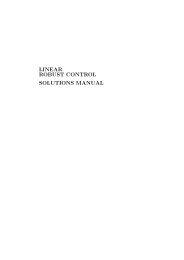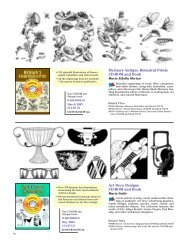SOLUTIONS MANUAL for Stochastic Modeling: Analysis and ...
SOLUTIONS MANUAL for Stochastic Modeling: Analysis and ...
SOLUTIONS MANUAL for Stochastic Modeling: Analysis and ...
Create successful ePaper yourself
Turn your PDF publications into a flip-book with our unique Google optimized e-Paper software.
67<br />
= 1− Pr{X 1 >n} Pr{X 2 >n}<br />
= 1− (Pr{X 1 >n}) 2<br />
since spins are independent <strong>and</strong> identically distributed. Notice that Pr{X 1 >n} =<br />
1 − p (n)<br />
0,10. Then letting T be the total number of spins<br />
Pr{T ≤ 2n} = Pr{Z ≤ n}<br />
= 1− (1 − p 0,10) (n) which implies that<br />
Pr{T =2n} = Pr{T ≤ 2n}−Pr{T ≤ 2(n − 1)}<br />
= (1− p 0,10) (n) − (1 − p (n−1)<br />
0,10 ) 2<br />
This result can be used to calculate the distribution or expectation. You will find that<br />
E[T ] < E[2X 1 ].<br />
27. (a)<br />
M = {1, 2, 3, 4, 5}<br />
≡ {insert, withdraw, deposit, in<strong>for</strong>mation, done}<br />
n represents the number of transactions<br />
⎛<br />
P =<br />
⎜<br />
⎝<br />
0 0.5 0.4 0.1 0<br />
0 0 0.05 0.05 0.9<br />
0 0.05 0 0.05 0.9<br />
0 0.05 0.05 0 0.9<br />
0 0 0 0 1<br />
(b) Both properties are rough approximations at best. Customers are likely to do<br />
only 1 of each type of transaction, so all of their previous transactions influence<br />
what they will do next. Also, the more transactions they have made, the more<br />
likely they are to be done, violating stationarity.<br />
(c) Need f (n)<br />
15 <strong>for</strong> n =1, 2,...,20 with A = {1, 2, 3, 4} <strong>and</strong> B = {5}.<br />
⎞<br />
⎟<br />
⎠















